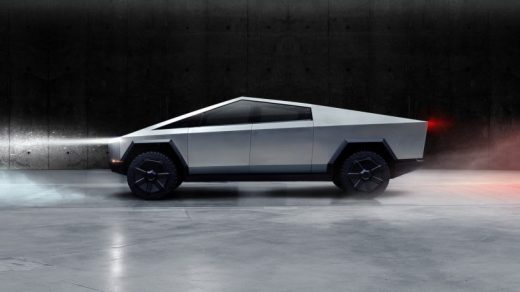Will Tesla’s insane looking new pickup convince more Americans to go electric?
“Trucks have been the same for a very long time,” said Elon Musk as he unveiled Tesla’s latest offering on Thursday night: the Cybertruck, an electric pickup truck that is barely recognizable as a truck. “We wanted to do something different.”
Built with a stainless steel exoskeleton—strong enough that a sledgehammer bounced off the door during a demonstration on stage, and Musk showed a video of a bullet bouncing off the steel in another test—the highest-end version of the truck can go from zero to 60 miles per hour in as little as 2.9 seconds and tow more than 14,000 pounds. (A separate test on stage, meant to demonstrate that the car’s transparent metal glass was unbreakable, failed when someone hurled a large metal ball at an allegedly shatterproof window—and it shattered.) One battery option has a range of 500 miles. Inside, there’s seating for six, and the back, a 6.5-foot covered bed, has 100 cubic feet of storage capacity. It starts at $39,900, ranging up to $69,900.
But will anyone buy it? Pickups are a critical market for electric vehicles: around three million are sold in the U.S. each year, and an electric option doesn’t yet exist. “It’s the last major segment that doesn’t have a plug-in model available,” says Nic Lutsey, who directs electric vehicle work at the nonprofit International Council on Clean Transportation. The startup Rivian plans to release an electric pickup next year, and Ford and GM plan to follow. Tesla has not announced when its truck will actually be available.
Right now, Lutsey says, the biggest reason that many drivers aren’t choosing electric vehicles is that the model they want isn’t yet available. “There are numerous barriers to growing the market,” he says. “Model availability is the primary one.” That’s followed by the cost of electric vehicles—something that continues to drop—along with the convenience of charging the battery and general awareness that the vehicles even exist. “Sometimes it can sound pretty depressing how few people know that there are electric vehicles that are within exactly what they’re looking for that would fit and be convenient, that do hit their cost point,” says Lutsey.
For those who want a military-like vehicle or need a powerful truck for work, the Tesla’s specs might be compelling. But it’s not clear how many buyers will be swayed by the aesthetic, which is reminiscent of some sort of science fiction tank. Musk has said in the past that it was inspired by Bladerunner, and that some might mean people don’t want it. “I actually don’t know if a lot of people will buy this pickup truck or not, but I don’t care,” he told Recode last year.
If traditional pickup owners, known for brand loyalty, can be convinced to try something new, the environmental impact could be meaningful. Transportation is now the largest source of emissions in the U.S., and most of those emissions come from passenger vehicles. Light-duty pickups get an average of only 17 miles a gallon, whereas a car like a Honda Civic gets 36 miles a gallon. Pickup sales are growing. If it can sell like Tesla cars—the Tesla Model 3 was the top-selling car in its category in California for the first half of this year—the Cybertruck could help make a dent in the country’s climate pollution.
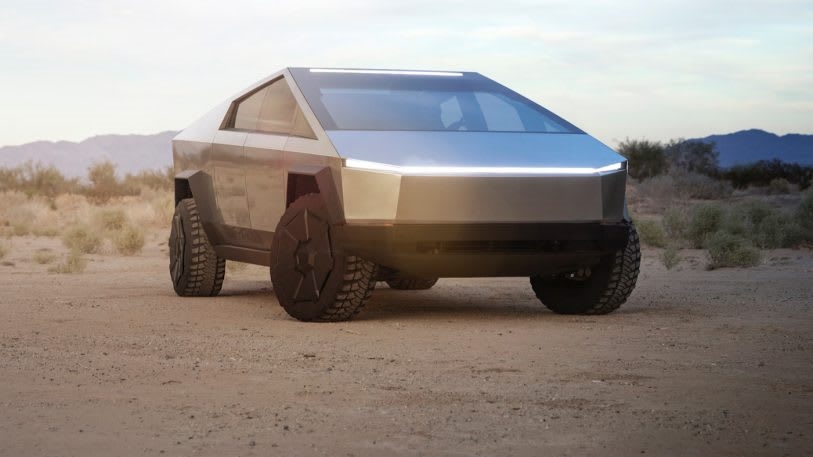
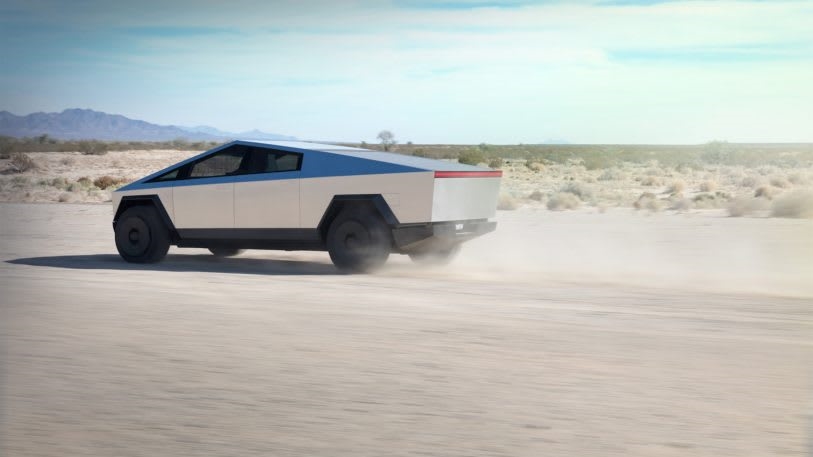
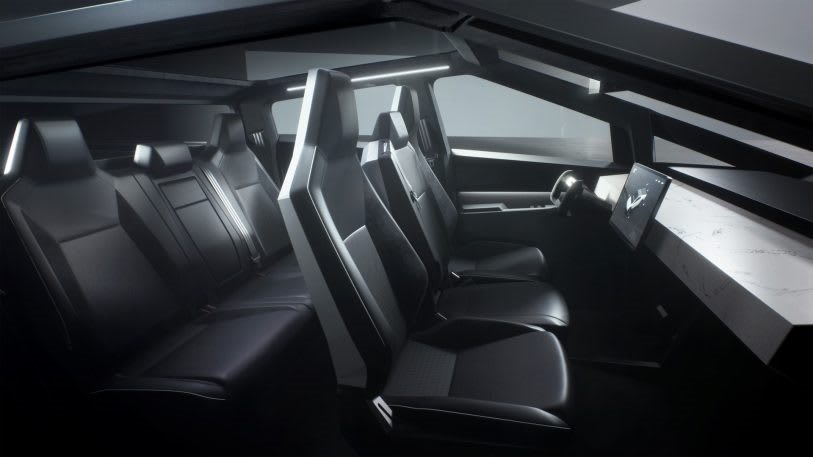
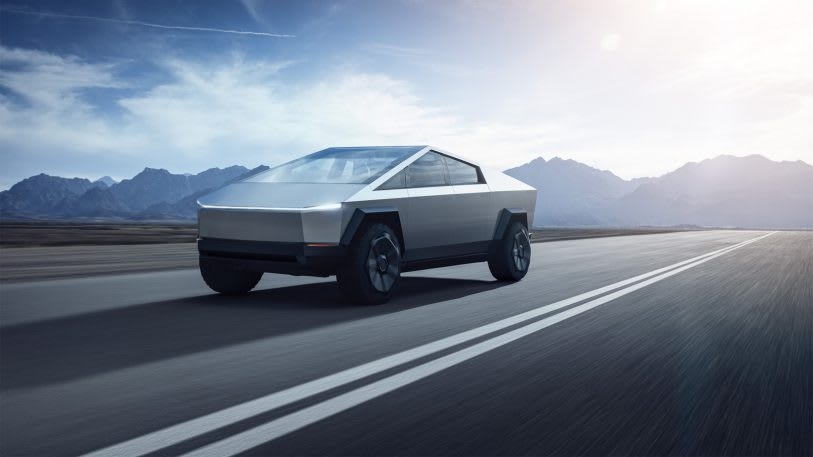
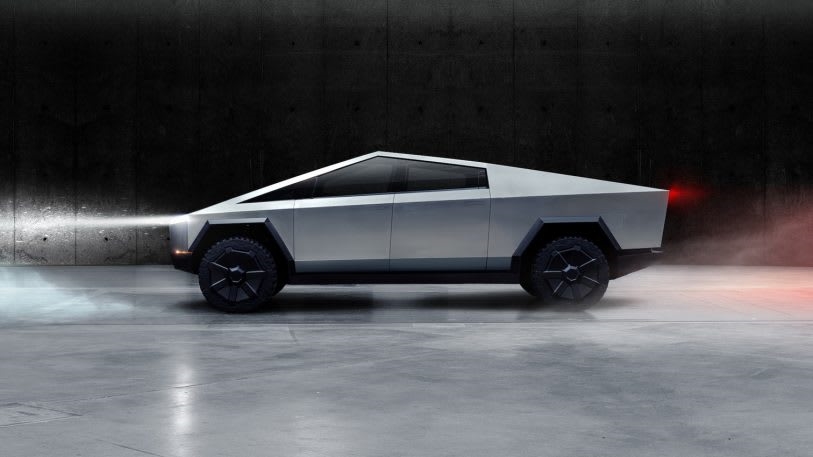
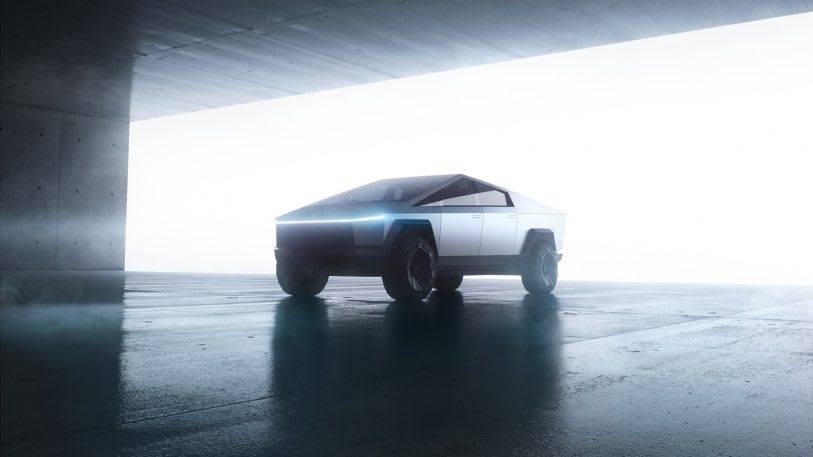
(32)

